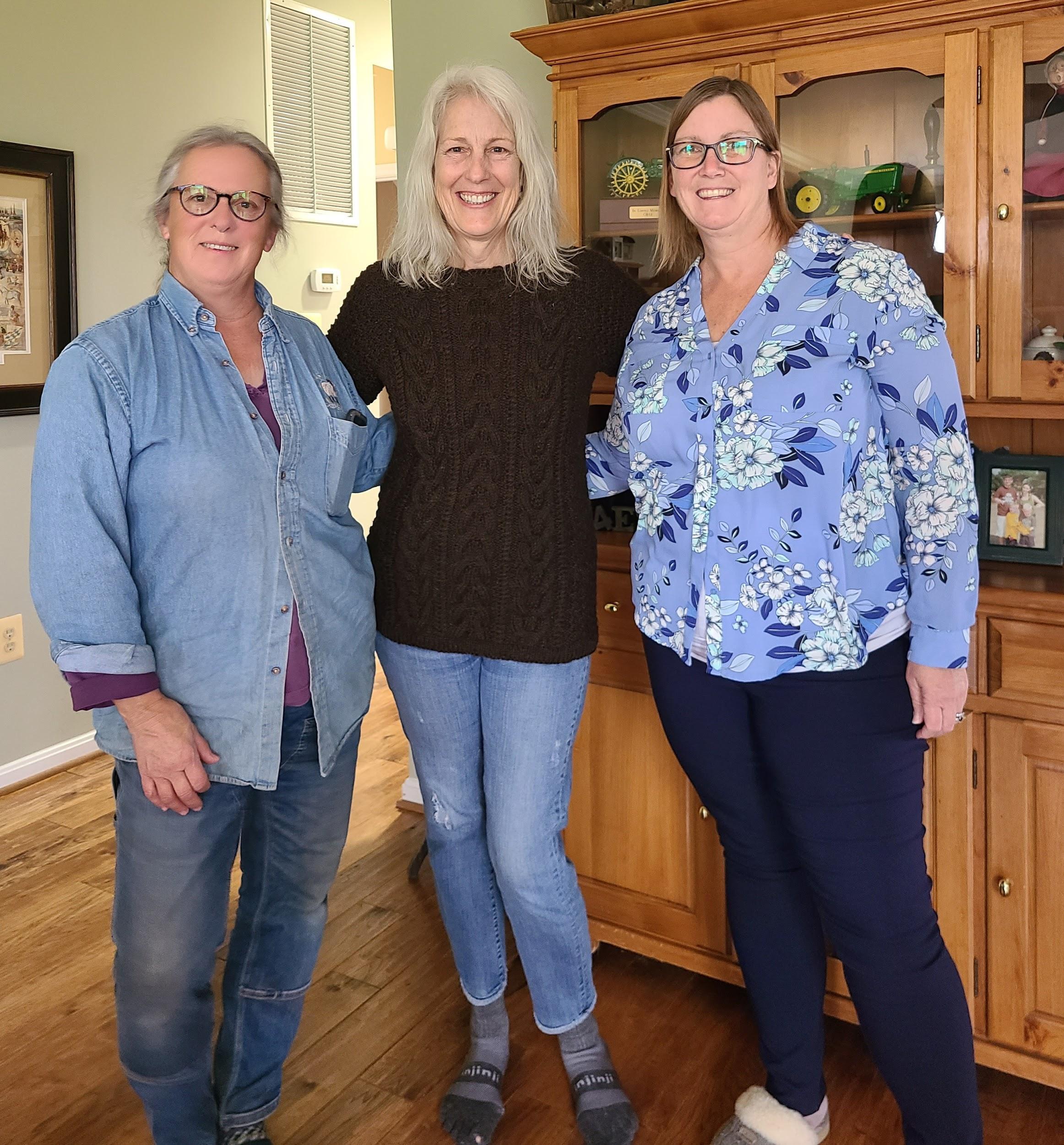
3 minute read
Weavers Guild of Greater Baltimore
Hot Chocolate Sweater
Stream: Embracing
Advertisement
100% Natural Wool ‘Special Dark’ Breed: Romney/Romeldale 3 ply from Lee Langstaff of Shepherd’s Hey Farm
Ellen: I approached Patty Sanville to be part of a special project to create a "new" loved sweater recreating an "old" loved sweater, that unfortunately was made from mostly synthetic fabrics. Shehad no yarn from her flock, so I was thrilled that Lee Langstaff of Shepherds Hey Farm had a yummy dark brown color that would feel like being inside of a warm and cozy cup of hot cocoa; irresistible. Lee explained that the color comes from the sun-bleached tips of black wool; when the fleeces are skirted these areas are set aside.
Patty and I then searched for patterns that had similar cables and she asked questions about modifications. What did I love and not love about the old sweater? After settling on a pattern Patty took my measurements and notes confirming my vision and desires. Periodically Patty would ask me to take a run over to try it on for her, and she’d forward pictures of the materializing sweater alongthe way. She relates:
The night before Ellen and Lee were coming to pick up and see the sweater, I was full of anxiety. Would it fit as designed, the sleeves be the correct length? Would Ellen love it as much as the original sweater, and Lee think I had done her yarn justice? So many questions swirling in my head. The answers were all a resounding YES. Ellen looked fantastic in the sweater, - the sleeves were perfect, the hem I designed worked as hoped. Lee seemed pleased.
This was an amazing collaboration of one woman's hard work and years of breeding selections, one woman's desire to have a sweater that was created within our fibershed in a sustainable way, and another woman's passion for knitting and making dreams come true. I think we made a great team!
Ellen Letourneau
Sweater hunter, fiber enthusiast and newbie sewer, quilter, weaver, and garment mender and maker living in the Agricultural Reserve on a 20 acre farm with my boyfriend and dog Rae. Patricia Sanville
Sheep producer, knitting enthusiast and owner of Budding Creek Farm

Cotton Pear
Stream: Borrowing
Cotton: Grown, Ginned, Carded, partially natural dyed by the artist. Natural brown cotton from US, but not local.
I wanted to take a process all the way from seed to finished project. Knowing there were many steps, and being a novice spinner, a small project fit the bill. I was inspired to grow and spin cotton by Melvenea Hodges of Traditions in Cloth.
Growing: Virginians need permission to grow cotton from Department of Agricultural and Consumer Services, to keep from interfering in commercial crops. I planted white, natural brown and natural green cotton. 6 white and 3 each of the colored. Luckily, they grew fairly carefree. We could have used another week of hot weather to fully ripen the bolls.
Dried the bolls for several months before pulling the puffs of cotton out of the bolls. An entire paper grocery sack full of cotton bolls yielded 2 oz of ginned cotton. The ginning process was interesting. After some experimentation, I ended up using a pasta maker and a sheet of leather to separate the cotton from it's seeds. Some was hand carded into punis, but I found carding on a drum carder more efficient and the yarn just as nice.
Spun on several different supported spindles. I found it too advanced for me to get the cotton threads to hold together while using my spinning wheel. I did use the wheel to ply two or three singles together and that worked well. The brown cotton I grew was just too short for me to spin. So I used a tiny bit of natural brown sliversourced from Traditions in Cloth.
Kerstin Zerbrigg helped me dye one of my skeins with indigo at the Summer gathering.
My pattern is a also a borrow from the wizards at Modern Daily Knitting. It's based on the Per Orla dishcloth, but on a smaller scale. The whole finished project weights only 5/8 ox or 17 gms.
Kathy Reed
Retired US Navy Captain, now a fiber farmer, Solitude Wool Partner, sometime knitting teacher, knit designer, local fiber guild communications chair. Learning to slow down.











